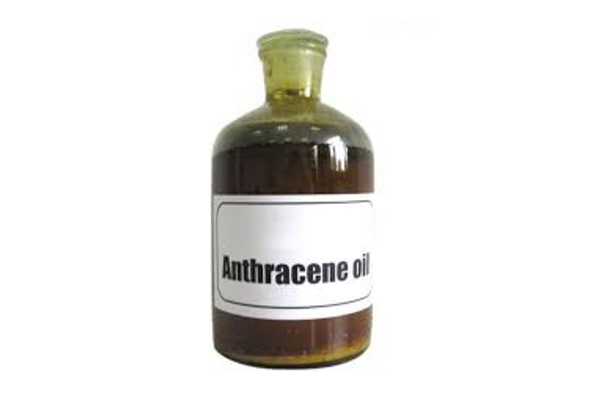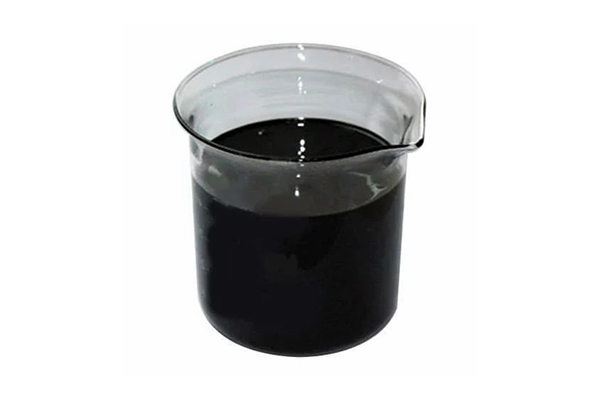Anthracene and anthracene oil are vital chemical compound derived from coal tar, playing crucial roles in various industries. This article delves into the trend analysis of these compounds, exploring their uses, market dynamics, and future prospects. Whether you're an industry professional, a researcher, or simply curious, this piece offers valuable insights into the world of anthracene and anthracene oil, providing a comprehensive overview of their significance and potential.
What is Anthracene and Anthracene Oil?
Anthracene is a tricyclic aromatic hydrocarbon with the formula C₁₄H₁₀. It consists of three fused benzene rings. Anthracene is a colorless chemical compound that exhibits fluorescence under ultraviolet (UV) light. It is a member of the polycyclic aromatic hydrocarbon (PAH) family.
Anthracene oil is a complex mixture of polycyclic aromatic hydrocarbons, including anthracene and phenanthrene. It is derived from coal tar and is often referred to as green oil due to its color. Anthracene oil is used as a feedstock in various industrial applications, including the production of the red dye alizarin and other dyes.

Where Does Anthracene Oil Come From?
Anthracene oil is obtained from the distillation of coal tar. Coal tar is a byproduct of the coal tar carbonization process, where coal is heated in the absence of air. During distillation, coal tar is separated into various fractions based on their boiling points. The fraction that boils at a relatively high temperature, typically between 270°C and 350°C, is anthracene oil. This process is crucial for extracting valuable aromatic compounds from coal tar.
The composition of anthracene oil can vary depending on the source of coal tar and the distillation process used. However, it typically contains a mixture of polycyclic aromatic hydrocarbons, with anthracene, phenanthrene, and carbazole being major components. Further processing, such as crystallization and purification, can then isolate anthracene from the anthracene oil.
What Are the Properties of Anthracene?
Anthracene has several notable properties of anthracene that make it useful in various applications. It is a colorless solid with a melting point of 216-218 °C. As a polycyclic aromatic compound, anthracene exhibits fluorescence under UV light, a characteristic exploited in various applications. It is relatively stable but can undergo oxidative reactions and is soluble in organic solvents like benzene and toluene.
Furthermore, anthracene is a reactive compound, particularly towards Diels–Alder reactions. It can act as a diene in 4+4 cycloaddition reactions, offering versatility in organic synthesis. Anthracene can be doped with anthracene to produce organic semiconductors and other functional materials. These unique properties of anthracene have led to its use in a diverse range of applications, from dye production to advanced materials.
What are the Industrial Applications of Anthracene Oil?
Anthracene oil has a wide range of industrial applications due to its chemical composition and properties. A significant application is in the production of the red dye alizarin and other dyes, as anthracene is a key intermediate in the synthesis of anthraquinone, which is then converted to alizarin.
Another key use of anthracene oil is used as a preservative for wood. It is also used in the production of carbon black, a key component in tires and other rubber products. Anthracene oil can also be used in the manufacture of coatings and plastic, and serves as a feedstock in the chemical industry.
Beyond these uses, anthracene oil finds application as an asphalt blend oil, fuel oil, and in certain specialized lubricants. The versatility of anthracene oil stems from its complex mixture of aromatic hydrocarbons, enabling its use across multiple sectors, including coal tar refining and the production of specialty chemical compounds.
How is Anthracene Used in Chemical Synthesis?
Anthracene is a versatile building block in chemical synthesis, primarily due to its reactivity in Diels–Alder reactions. In these reactions, anthracene acts as a diene, reacting with dienophiles (compounds with electron-deficient double bonds) to form adducts. This 4+4 cycloaddition reaction is a cornerstone of organic synthesis, allowing the creation of complex molecular structures.
One of the most important application of anthracene is converted into anthraquinone via oxidation. Anthraquinone is a crucial intermediate in the production of the red dye alizarin and other dyes, especially red dye alizarin. Further, anthracene derivatives can be used in the synthesis of various other chemical compounds, including organic semiconductors and materials with luminescent properties. These applications showcase how the unique properties of anthracene make it a valuable tool in the world of chemical compound synthesis.

What Are the Health and Environmental Concerns?
While valuable in many applications, anthracene and its derivatives, including anthracene oil, present health and environmental concerns. Exposure to anthracene can cause skin and respiratory irritation. Certain polycyclic aromatic hydrocarbons (PAHs), like those found in anthracene oil, are classified as carcinogenic by the International Agency for Research on Cancer (IARC).
Anthracene oil and related materials have the potential to harm the aquatic environment and can be toxic to edible aquatic organisms. Emission from industrial processes that utilize anthracene and coal tar, such as coke production, can contribute to air pollution. Therefore, handling anthracene and anthracene oil requires careful attention to safety protocols, including the use of protective equipment. Careful waste management practices are essential to minimize exposure to anthracene and its derivatives.
What is the Global Anthracene Oil Market?
The global anthracene oil market is a segment within the broader market for coal tar derivatives and other chemical compounds. The growth of the global anthracene oil market is driven by the increasing demand for anthracene and its derivatives in various industries, including dye production, wood preservative manufacturing, and the production of carbon black.
The global anthracene oil market is highly fragmented, with a significant number of competitors in various regions. Factors such as industrialization and the consumption of specialty chemicals in emerging economies, particularly in the Asia Pacific region, contribute to the market growth. Detailed trend analysis suggests steady growth, however, strict environmental regulations and the volatile prices of raw materials such as coal tar can influence the market's expansion.
What Factors Drive the Growth of the Global Anthracene Oil Market?
Several factors drive the growth of the global anthracene oil market. The primary factor is the increasing demand for anthracene and its derivatives in various industries. The chemical industry's demand for anthracene as a precursor for dye production is a significant driver, particularly in the textile sector. The use of anthracene oil is used as a wood preservative, another key driver.
The expansion of the automotive industry also contributes to market growth, as carbon black, derived from anthracene oil, is used in tire manufacturing. Industrialization and economic development in emerging markets, especially in Asia Pacific, have led to increased consumption of specialty chemicals, further fueling the market growth. Technological advancements that expand the range of applications for anthracene and anthracene oil further promote market growth.
Are There Any Restraining Factors Affecting Market Growth?
Several factors act as a restraining factor on the market growth of anthracene oil. Stringent environmental regulations concerning the handling and emission of PAHs (Polycyclic Aromatic Hydrocarbons), including anthracene, limit the use of coal tar derivatives and anthracene oil, leading to increased production costs and compliance requirements.
The carcinogenicity of certain PAHs poses health concerns, which require careful management and can discourage the use of anthracene oil in specific applications. Furthermore, the volatile prices of crude oil and coal tar, key feedstocks for anthracene oil, can impact production costs and profitability, affecting the market growth. The presence of a significant number of competitors and the complex supply chain also present challenges to the market growth.
What Are the Future Trends and Opportunities in the Anthracene Market?
Several future trend analysis are shaping the anthracene market, offering both challenges and opportunities. Research and development efforts are focused on finding safer alternatives to anthracene oil, particularly in wood preservatives and other applications where toxicity is a concern. The need for sustainable practices is driving the adoption of cleaner production methods and recycling of materials.
There is growing interest in the use of anthracene derivatives in advanced materials, such as organic semiconductors and light-emitting diodes (OLEDs), due to the fluorescence properties of anthracene. These applications could potentially drive significant demand in the future. The increasing industrialization and consumption of specialty chemicals in Asia Pacific and other emerging markets provide opportunities for market growth.
Allen from China, as a factory owner with 7 production lines, has the capabilities to supply high-quality coal tar products including anthracene oil, to meet the future demands of the anthracene market. The use of state-of-the-art production methods ensures compliance with environmental standards and the ability to provide high-quality products for various industrial applications. The B2B business model will enable to cater the needs for aluminum smelters, steel mills, and graphite electrode manufacturers. Our products are ideal for businesses in the USA, North America, Europe, and Australia.
- Remember:
- Anthracene is a key chemical compound with three fused benzene rings, known for its fluorescence under UV light.
- Anthracene oil is derived from coal tar, and is a mixture of polycyclic aromatic hydrocarbons.
- Anthracene oil is used in the production of the red dye alizarin, wood preservatives, carbon black, and other industrial applications.
- The global anthracene oil market is influenced by the increasing demand for anthracene and its derivatives.
- Environmental regulations and concerns about the toxicity of PAHs pose challenges to the market growth.
- The future of the anthracene market lies in finding safer alternatives, developing advanced materials, and capitalizing on growth in emerging markets.
Looking to source high-quality coal tar products? Explore our range of medium-temperature asphalt block and our special asphalt for oilfield additives. Contact us today to discuss your needs and how we can help you succeed.
Post time: 02-17-2025





